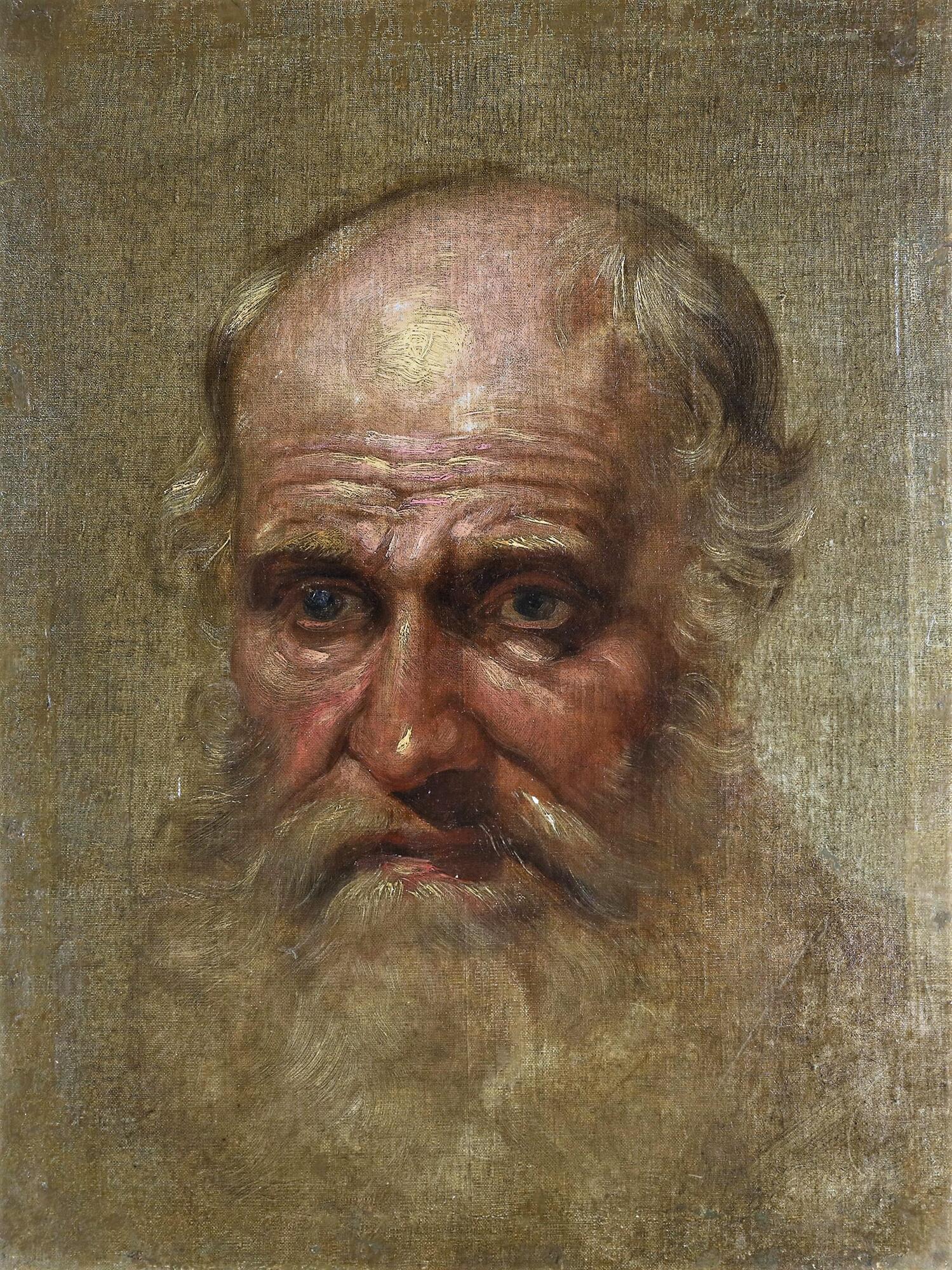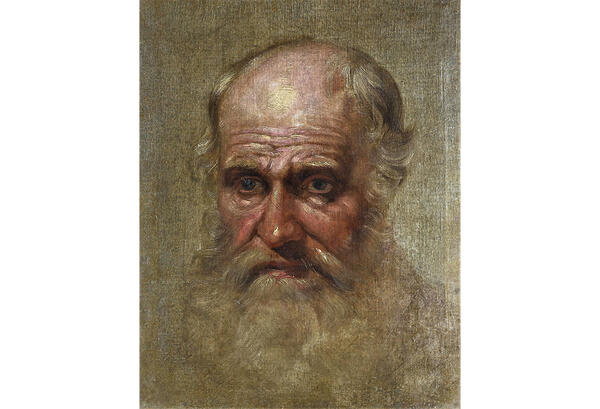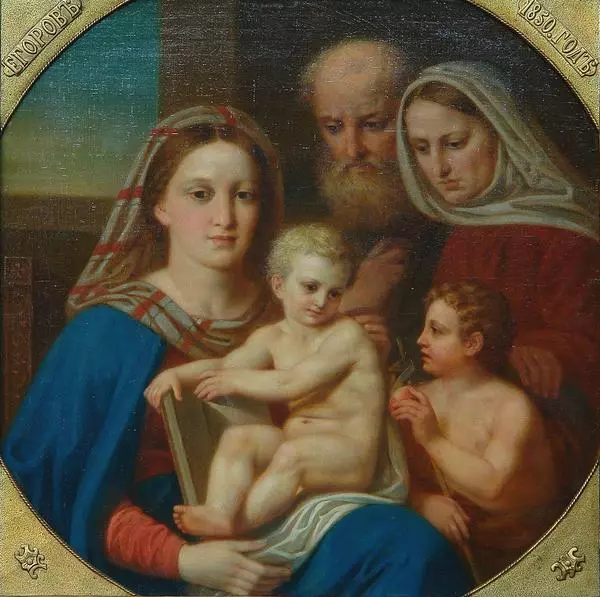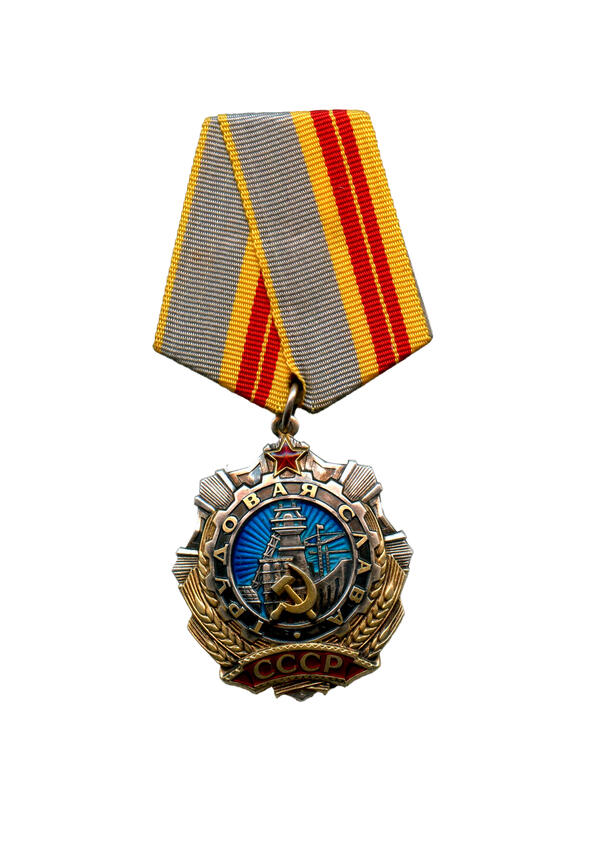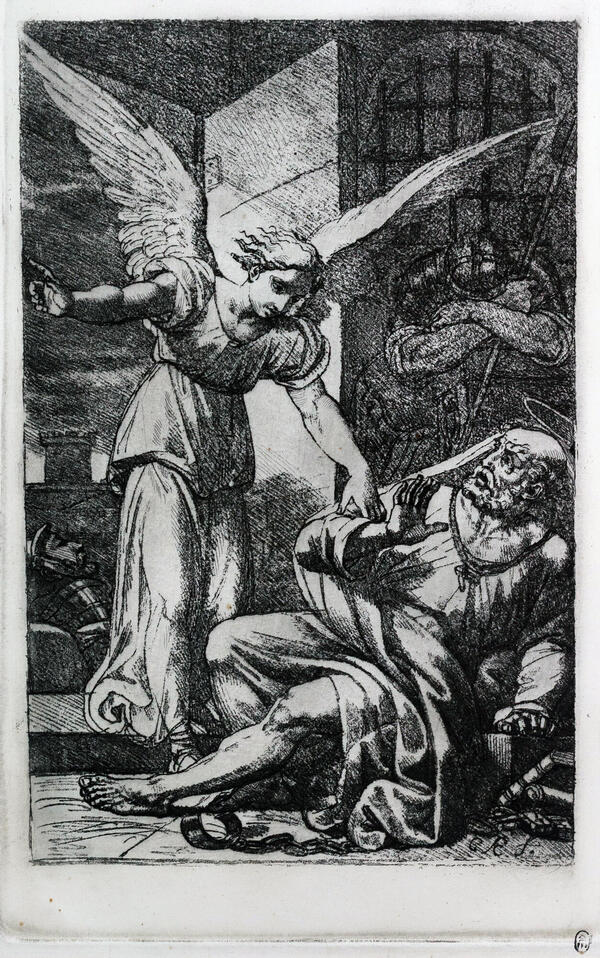Alexei Yegorov as a child was found by the Cossacks in the Kalmyk steppe. They sent the boy to the Moscow Orphanage. At the age of six, he became a student of the Imperial Academy of Arts, where his teachers were the famous painters Ivan Akimov and Grigory Ugryumov. Yegorov received honorary awards and medals several times during his studies and became interested in graphic art and drawing from life. In 1797, he was recognized as one of the best graduates of the Academy and offered a teaching position. Three years later, he received the title of academician.
In 1803, the directorate of the Academy sent Alexei Yegorov abroad to learn from foreign masters. The Italian public really liked his works. He was nicknamed “Russian Raphael” for his picturesque talent and a “bear” for his physical strength and bad temper.
In his paintings, Yegorov portrayed anatomically correct figures, skillfully made the composition, and selected the colors that best conveyed the mood of the depicted. His talent was highly appreciated by Pope Pius VII, who wanted to make Yegorov a court painter in the Vatican. However, in 1807, the artist chose to return to his home country to teach again at the Academy of Arts.
Not only professional artists, but also aristocrats and even members of the imperial family praised Yegorov’s works. In 1812, the artist was acknowledged as an expert in historical painting, and was awarded the title of professor. In 1814, he completed the painting ‘The Savior’s Torture’, which his contemporaries called his best work.
In the early 1830s, Alexei Yegorov’s works were constantly commissioned, even by the state galleries. The artist’s position changed in 1840 when Nicholas I commissioned him to paint a picture for the St. Catherine’s Cathedral in Tsarskoye Selo. The emperor did not like the finished work, and the artist was fired from the Academy. Even though Yegorov fell out of favor with the emperor, people still admired his early works. But paintings created in the 1840s were no longer so popular with art lovers and critics.
The portrait genre was of particular importance for Alexei Yegorov; he preferred to paint portraits from life. The painting ‘Old Man’s Head, ” displayed in the exhibition, has no signature or date. It features a man with a thick beard, gray hair, and a receding hairline. This work is distinguished by skillful composition, forms, and proportions, as well as a holistic perception of the artist’s model.
In 1803, the directorate of the Academy sent Alexei Yegorov abroad to learn from foreign masters. The Italian public really liked his works. He was nicknamed “Russian Raphael” for his picturesque talent and a “bear” for his physical strength and bad temper.
In his paintings, Yegorov portrayed anatomically correct figures, skillfully made the composition, and selected the colors that best conveyed the mood of the depicted. His talent was highly appreciated by Pope Pius VII, who wanted to make Yegorov a court painter in the Vatican. However, in 1807, the artist chose to return to his home country to teach again at the Academy of Arts.
Not only professional artists, but also aristocrats and even members of the imperial family praised Yegorov’s works. In 1812, the artist was acknowledged as an expert in historical painting, and was awarded the title of professor. In 1814, he completed the painting ‘The Savior’s Torture’, which his contemporaries called his best work.
In the early 1830s, Alexei Yegorov’s works were constantly commissioned, even by the state galleries. The artist’s position changed in 1840 when Nicholas I commissioned him to paint a picture for the St. Catherine’s Cathedral in Tsarskoye Selo. The emperor did not like the finished work, and the artist was fired from the Academy. Even though Yegorov fell out of favor with the emperor, people still admired his early works. But paintings created in the 1840s were no longer so popular with art lovers and critics.
The portrait genre was of particular importance for Alexei Yegorov; he preferred to paint portraits from life. The painting ‘Old Man’s Head, ” displayed in the exhibition, has no signature or date. It features a man with a thick beard, gray hair, and a receding hairline. This work is distinguished by skillful composition, forms, and proportions, as well as a holistic perception of the artist’s model.
